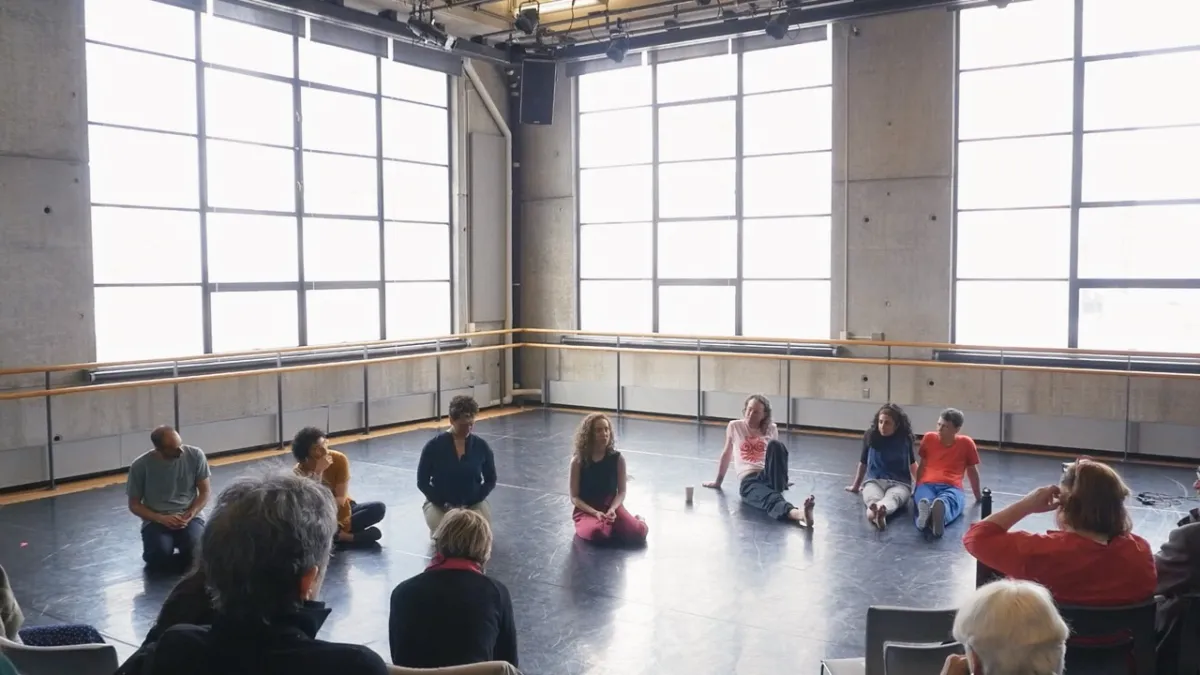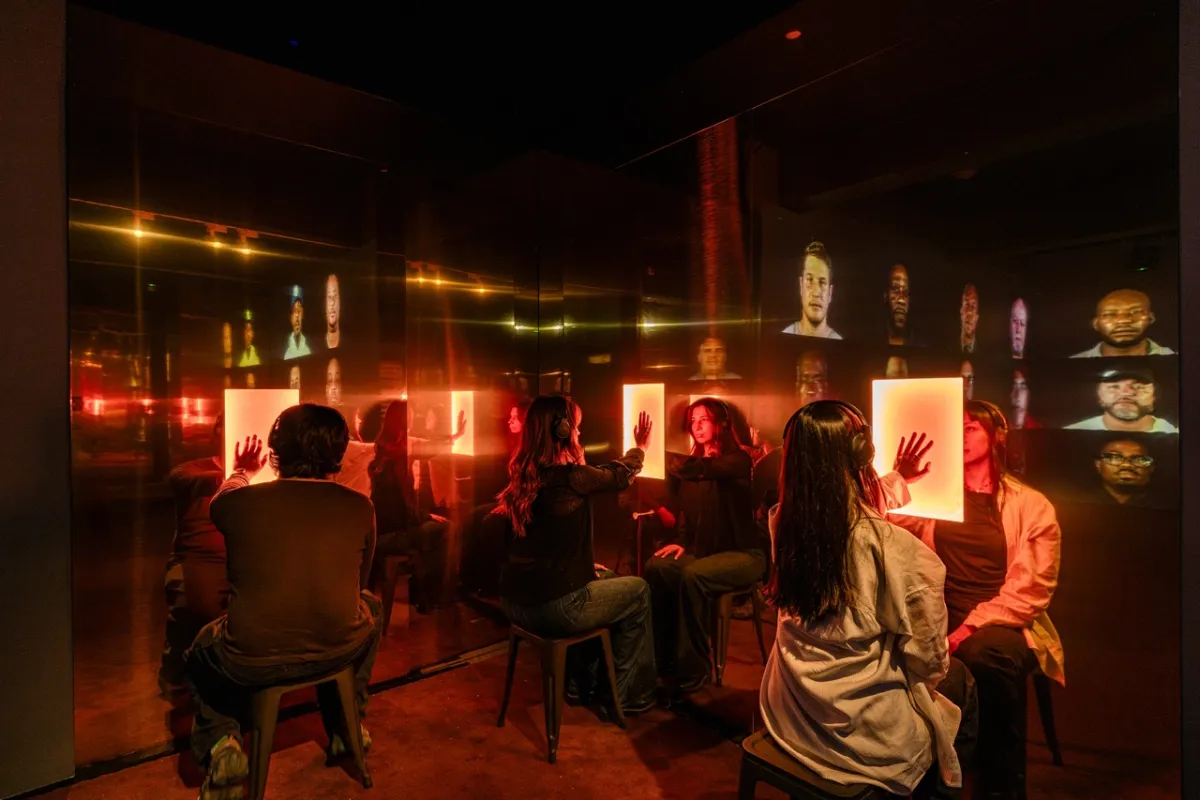

A Father's Lullaby. Image credit: Mikhail Mishin. Courtesy of Tribeca
It’s only us; there’s no them. That’s the provocation at Tribeca’s 2025 Immersive exhibition, titled In Search of Us, mounted in partnership with Onassis ONX and Agog. The exhibit seeks to challenge the act of othering that is so entrenched in media landscapes with “us vs. them” ideologies. The exhibit features a sweeping range of genres, forms, and technologies. But the documentary genre finds prominence in this year’s program, thanks in part to the exhibit's focus on social impact storytelling, according to co-curators Casey Baltes (Tribeca) and Jazia Hammoudi (ONX).
“The immersive space, particularly VR, has a very strong basis in documentary storytelling,” says Baltes, “And we really see the roots and evolution of that in this program.”
Thankfully, the tired truism of VR is an empathy machine has been left at the door. These are veteran artists at work. The documentarians in this show have crafted complex, nuanced, and pronounced pathways to truth-telling, which insist that visitors approach and engage with the work on their own terms.
Eleven art installations take over two floors of WSA, a glass office tower in lower Manhattan—with backdrops of floor-to-ceiling views of the city at every turn. While VR headsets are still featured in small doses, they are balanced with works in other formats, including large projections, live performances, haptics, augmented and mixed reality, along with interactive AI explorations. In fact, four of the eleven works in this exhibit, two of which are described below, were incubated in the MIT Open Documentary Lab, where the author of this piece works.
The documentary work is all spatialized. As visitors interact and move their own bodies within the environment, they encounter the stories and characters. In Father’s Lullaby, you reach your hand and hold it against a lit wall panel to hear an intimate interview. In Fragile Home, you move within the physical space of a living room to witness, through your mixed reality headset, time unfold during war. In There Goes Nikki, you walk through a live, enchanting wildflower garden lush with scent to reach a cosmically proportioned AR altar dedicated to the titular poet.. In these ways, as you—as visitor, audience, player—are present, you are accountable.
While the openness of the office-turned-exhibition hall sometimes presents a challenge for visitors to hold and experience each piece independently, the free-flowing open concept also gives an ethereal cohesiveness to the exhibit’s theme. After Tribeca screenings ended, the In Search of Us exhibit ran for two additional weekends until the end of June.
About half of the show is comprised of documentary or documentary-adjacent work. Below are reviews of four exemplary nonfiction works included in In Search of Us.
A Father’s Lullaby
In A Father’s Lullaby, Rashin Fahandej weaves an immersive tapestry of songs, data and testimonies of formerly incarcerated fathers along with the people whose lives intersect with theirs. The piece is set within an enclosed room which envelopes visitors in wall-scale projection and surrounding audio. Fathers, filmed in close-up looking directly into the camera, sing moving renditions of lullabies such as “Hush Little Baby” and the Beatles’ “Let It Be” which drift in and out over 26 minutes, juxtaposed with data visualizations representing the exponential growth of the prison-industrial complex in the US.
In one corner of the room, visitors are asked to partake in “deep-witnessing stations.” They can take a seat, put on individual headphones and activate audio stories when they keep their hand in place on a haptic wall panel. Audio interviews unfold for them, told by three fathers who chart the multiplicity of lives devastated by carceral separation.
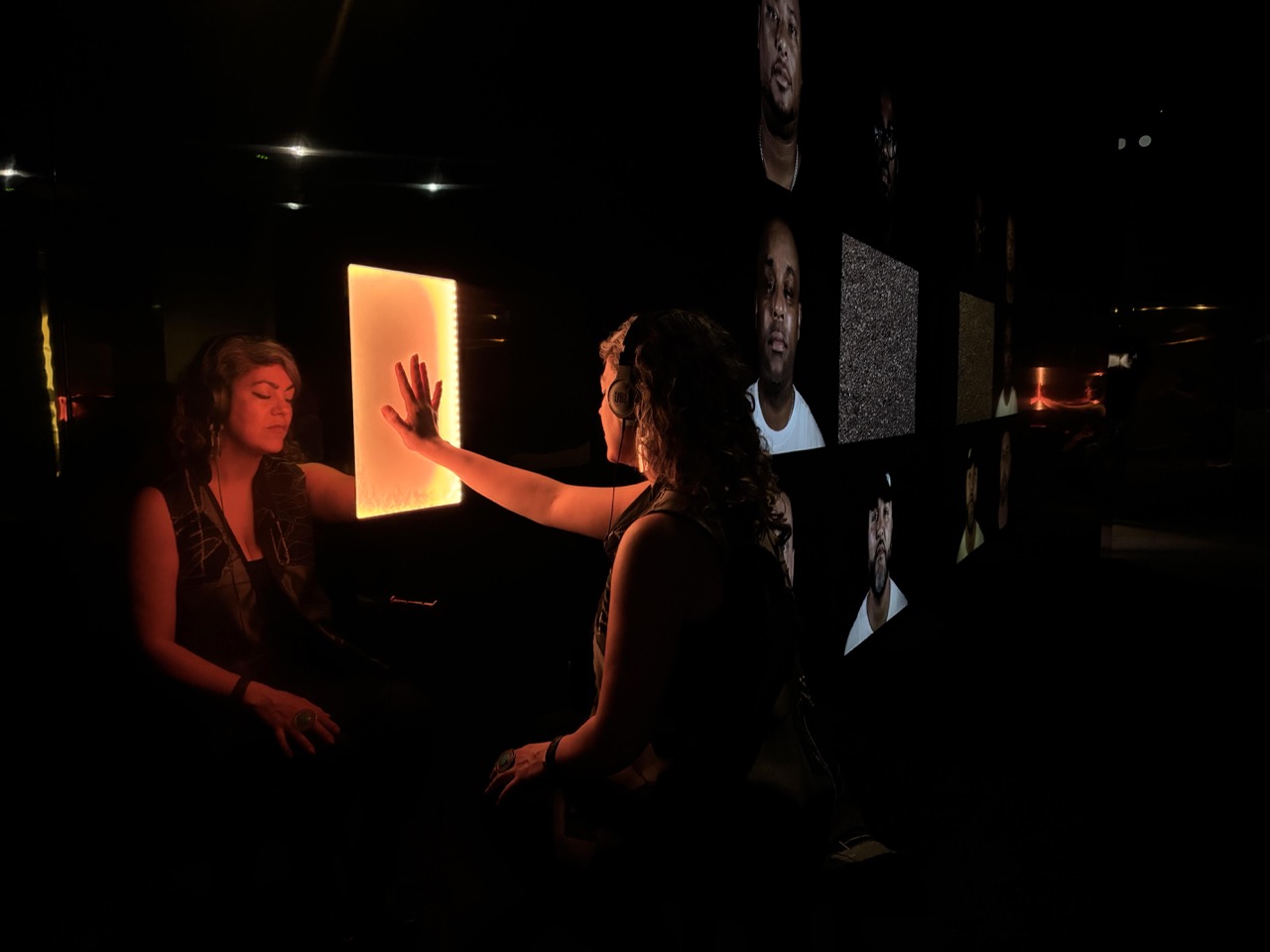
“The people you encounter singing, speaking, and occupying space—many are ordinary citizens, artists, priests, probation officers, as well as justice-impacted citizens,” Fahandej says, “You don’t know who is or isn’t formerly incarcerated. The stories of the fathers are made visible/audible only through layered, embodied, and often demanding physical encounters of your body. The installation resists passive consumption. The audience cannot simply look. Instead, they must enter into a sensory contract.”
“Rashin is all about showing the ways that the carceral state and the loss of the father impact all of us,” notes Hammoudi “and that is such an intimate violence to all Americans.”
“I utilize technology precisely to interrupt the extractive gaze and create a space where connection is intentional and grounded in ethical presence, mutual agency, and purpose, says Fahandej, “The technologies I use are not for spectacle—they’re for refusal, resistance, with simultaneous care and relational witnessing.”
This is a deeply co-created life’s work, an artist collaborating with documentary participants (subject is not the right word here), institutions, students, and technologies alike—all ten years in the making. It is overlapping, dense, and mesmerizing in both its up-close intimacy and vast scale. In an extension of the piece, Fahandej also created a site-specific and site-responsive AR audio walking tour through the Financial District, called Lullabies Through Time, to further situate the work within the history of lower Manhattan. The audio tour includes the site of Wall Street’s historic slave market, only a stone’s throw away from the exhibit.
Fragile Home
Space is also the container for engagement in Fragile Home, in which creators Ondřej Moravec and Victoria Lopukhina creatively layer realities. They use physical installation and immersive technologies, creating an installation consisting of a bare bones living room: a couch, a dining room table, family photos on a wall, a window, a door. Visitors mount a mixed reality headset, which augments the existing physical space using virtual animations that move as the visitor travels through the room. As the experience unfolds without a single spoken word, the documentary allows visitors to witness transformations of the space through different time periods of peace, war, devastation, and in turn, rehabilitation during the Russian attacks on Ukraine.
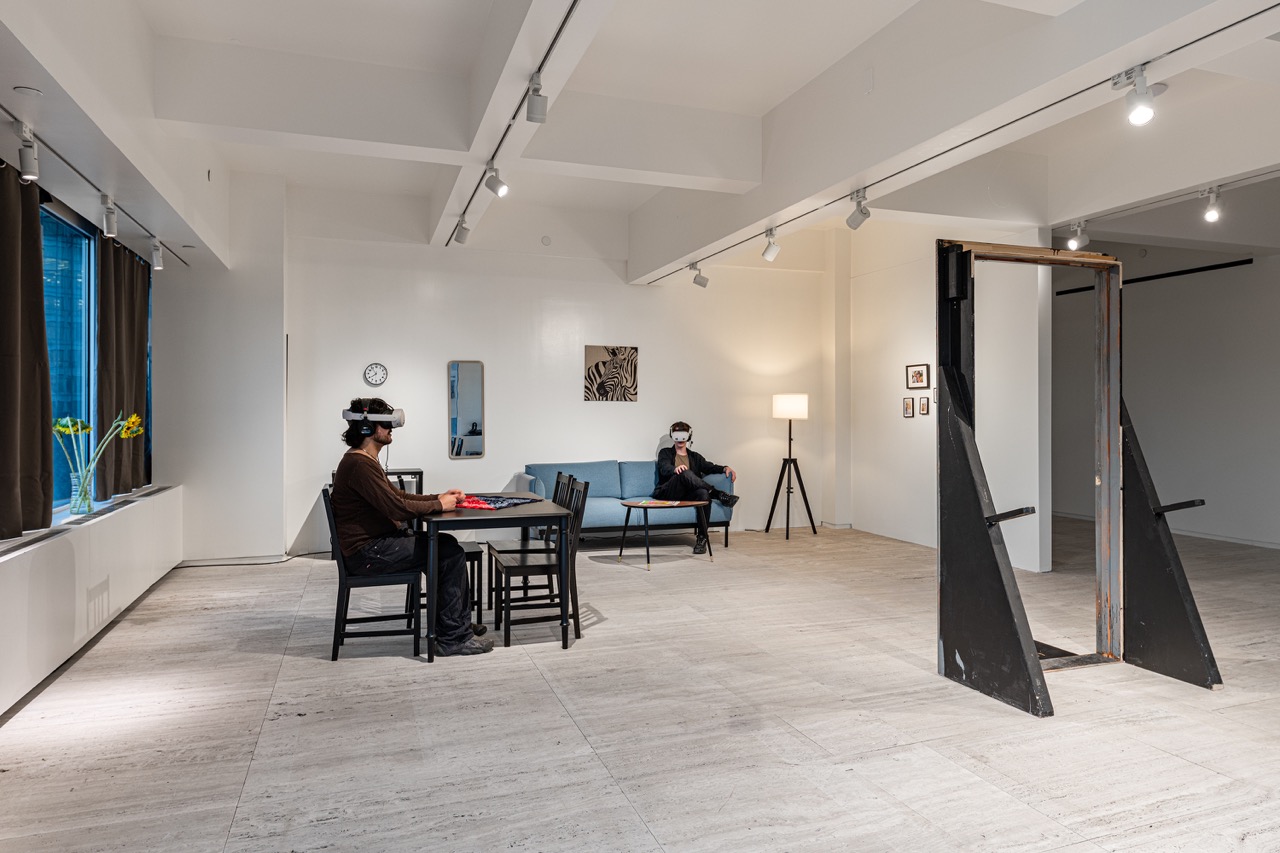
“We decided not to follow one story and tell it through traditional narrative approaches, but rather, dive more into an environmental experience. So you, as a viewer, are discovering,” explains Moravec, “We wanted to include artifacts and we decided not to explain them directly. We build on facts—but we chose to follow emotions and senses instead.”
“What a huge act of generosity vis-a-vis the audience that Ondrej and his team are showing,” says Hammoudi. The generosity lies in the invitation to be welcomed into the intimacy of a home rather than gaze from the outside in.
The Innocence of Unknowing
Inverting the power of the gaze features in another documentary, which confronts systems of surveillance. With The Innocence of Unknowing, co-creators Ryat Yezbick and Milo Talwani have gathered over 600 clips of TV news footage detailing mass shootings in the US since the sixties. Reviewing the footage in slow motion (and to haunting effect at times, in reverse), they stare down into the underlying choreographies and patterns of public violence, lack of gun regulation and intensifying police crowd control: Hands up. Single file. To the ground. The refinement of surveillance capitalism captured in video, over the decades.
Pushing their experiment further, they created an AI tool to see if they could dig even deeper into the collection. “I was initially curious to see how a surveillance tool would categorize and sort this kind of archival material, what kind of predictive patterns it might point out, and if I could use AI—a tool devised by surveillance capitalists for predominantly surveillance purposes—against itself,” says Yezbick.
With Talwani’s coding skills, they trained their AI model on ten key humanities texts (such as those of Audre Lorde, Susan Sontag and Virginia Eubank), seeking a meaningful intervention in contrast to the generic and murky training data sources of off-the-shelf AI tools. But according to Yezbick, they learned in the process:
“AI is not at all it's hyped up to be. Tech bros publicly stating they fear they've unleashed a destructive, sentient monster on society are only really just talking about themselves and their own behavior. …AI is not ‘thinking’; it's sorting information. To make anything artistically worthwhile with it, you really have to thoroughly process the material it gives you and know how to probe it for better results while also commenting on the biases in the results it is giving you, whether that be in generative AI imagery or textual analysis.”
At appointed times during Tribeca, the duo presented the work as live performances. They stand behind lecture podiums, each at either side of their big screen, narrating what they and their machine perceive in the materials.

“There were a few mass shootings during the first week and a half of the show alone. Who knows how many will have taken place by the time the show closes at the end of June. It's just that these things are sadly so frequent at this point. Creating it as a live documentary allowed us to address the audience directly in a way that hopefully left people feeling empowered.”
In an eerie touch, their installation space is lined with bouquets of cut and wilting flowers, evoking the makeshift memorials at mass shooting sites across the country.
There Goes Nikki
There are signs of life in full bloom at this exhibition too—rooted in a lush, aromatic garden of living flowers, herbs, and plants (gorgeously crafted by a theatre set designer)—and encircling a very different kind of memorial. A joyful, imaginative, and uplifting one.
There Goes Nikki is the collaborative result of an intergenerational creative team of documentarian parents Michèle Stephenson and Joe Brewster, as well as their creative technologist son, Idris Brewster. During the seven-year-long filming of their highly-acclaimed documentary feature film Going to Mars: The Nikki Giovanni Project (2023), Stephenson and Brewster shot many experimental scenes in state-of-the-art XR studios at Virginia Tech, where Giovanni worked as a professor for 40 years.
At one point, Idris, co-founder of Kinfolk Tech, expressed interest in featuring Giovanni as part of their own ongoing AR memorial project. So in one of their sessions at Virginia Tech, the team filmed Giovanni reciting her iconic poem of Black Freedom, “Quilting the Black-Eyed Pea (We’re Going to Mars),” using Depthkit.
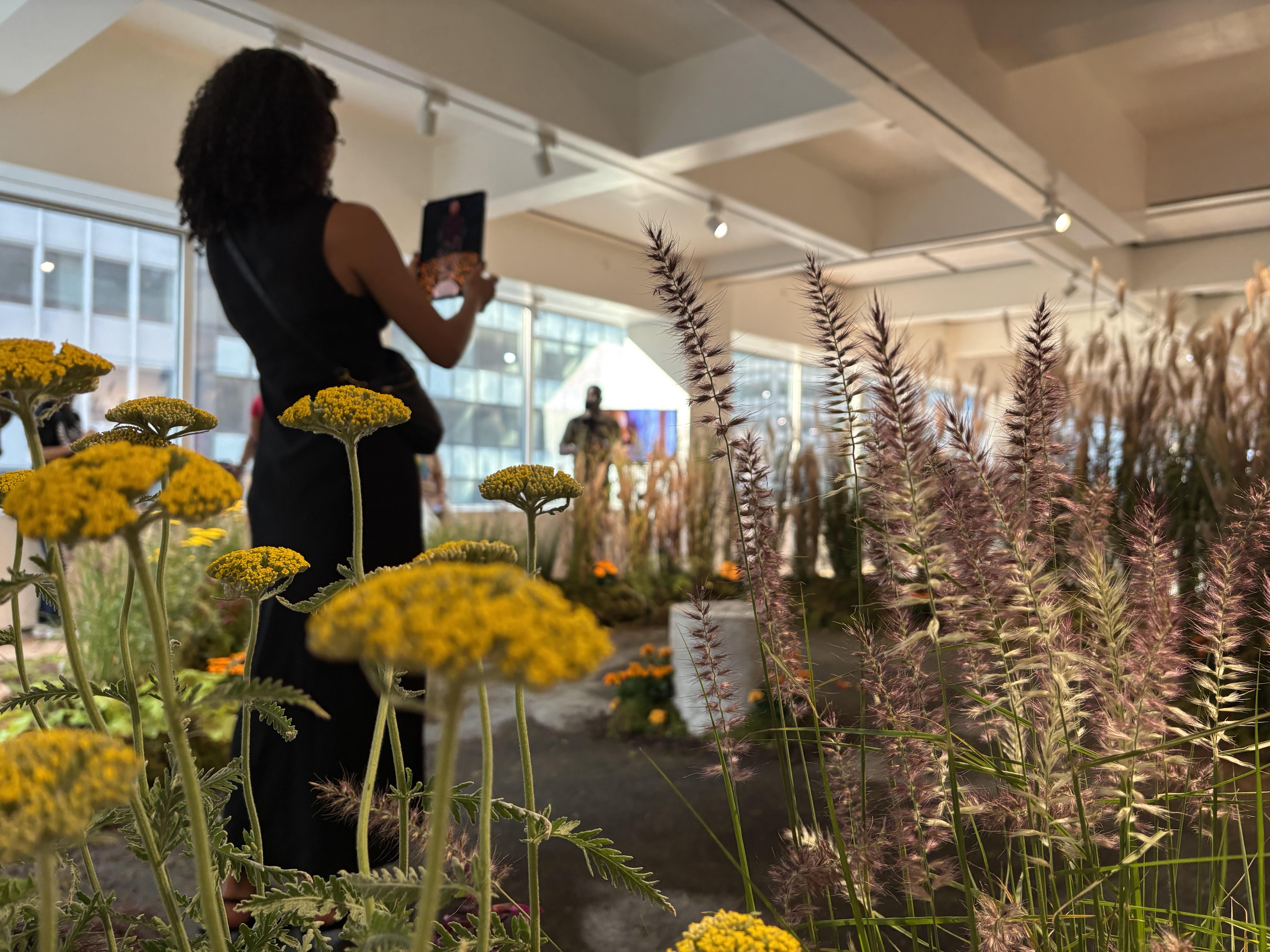
Originally, the team had hoped to release the AR extension alongside the 2023 film. However, it was only last year, after the film’s long and successful theatrical run, that the stars aligned for the immersive piece. Using the volumetric capture, Idris and the team reimagined the work as a stand-alone augmented reality work for Tribeca, viewable through an iPad inside a living garden installation anchored with an altar at its core.
Additionally, before and after entering the garden, visitors are invited to watch two short clips as companions to the AR piece. Joe Brewster explains that the onboarding clip gives viewers meaningful context around Giovanni’s world-view: “Through Nikki’s own words about her beliefs around life, death and what it means to exist on this earth as a sentient being connected to everything else, death does not exist.”.
Giovanni left this world and transitioned on December 9, 2024 and There Goes Nikki sends her off with love. In doing so, it also sends visitors into an elevated realm of consciousness. This work vibrates with the circularity of unending life, as a portal to a universe of possibility.
In Conclusion
In Search of Us leaves one wondering about the possibility for truth-telling when, arguably, the entire field of documentary is in existential crisis, in the face of untethered technologies controlled by dangerous forces, with the resulting tsunamis of disinformation swirling online.
“We are currently at a crossroads of violently competing narratives that threaten the very existence of our communities and those we are in solidarity with—the current climate can lead to desperation and pre-emptive concessions, or it can be seen as a long game that has the potential to lead our communities to a reimagining of what storytelling and its accompanying technology can be for us and future generations,” says Joe Brewster. “Funding is extremely limited—Black and Brown stories and bodies are under physical threat and being invisibilized—but these must also be the times that we as artists on the frontlines get to work. Our ancestors, such as Nikki and those before her, have already shown us the way.”
Hammoudi notes that the theme of the exhibit underlines “The importance of art and creative storytelling when facts alone don't suffice, or facts themselves are in question. That was in the background of the show and part of the urgency behind this thematic ‘In Search of Us.’ There's an inherent seeking of truth or truths in the title.”
Historian Yuval Harari presents a similar thesis in his recent book about AI, Nexus: “More information does not lead to more truth. Indeed, facts alone, in an age of us vs them, will not suffice.”
The In Search of Us exhibition shows that the documentary instincts for creative and immersive interpretations of reality, ones of poetry, song, art, and awe, shaped with dignity, power, and respect, may hold our strongest chances for meaningful justice and collective liberation for us all.
Katerina Cizek is a Peabody- and Emmy-winning documentarian, author, producer, and researcher working with collective processes and emergent technologies. She is a research scientist, and co-founder of the Co-Creation Studio at MIT Open Documentary Lab. She is lead author (with Uricchio et al.) of Collective Wisdom: Co-Creating Media for Equity and Justice, published by MIT Press in 2022.
